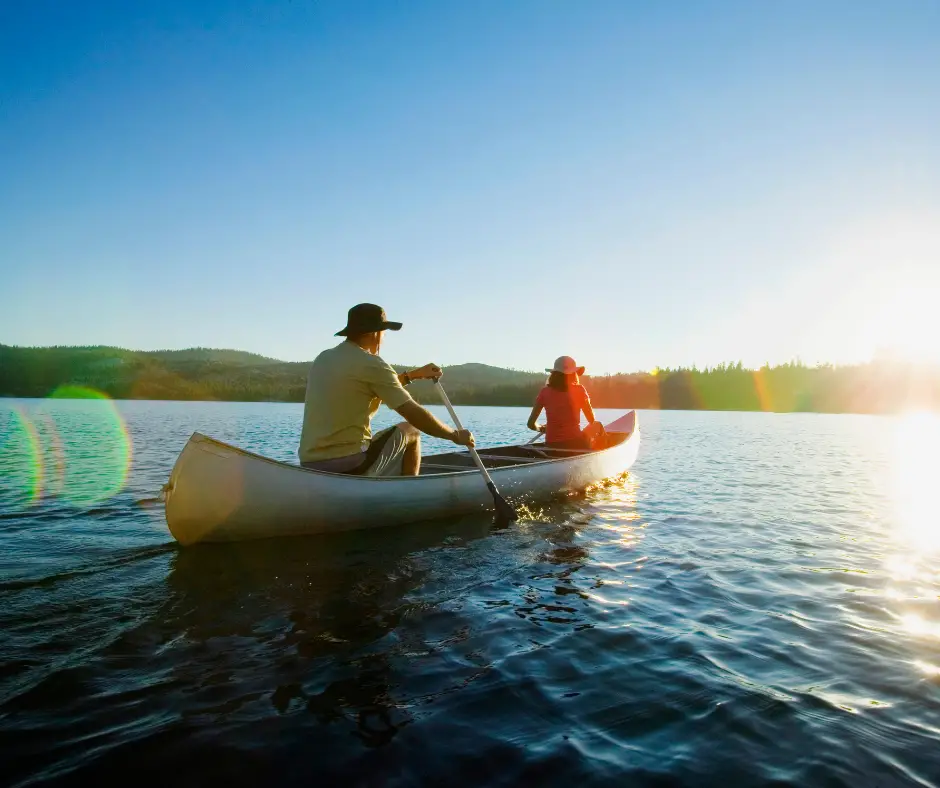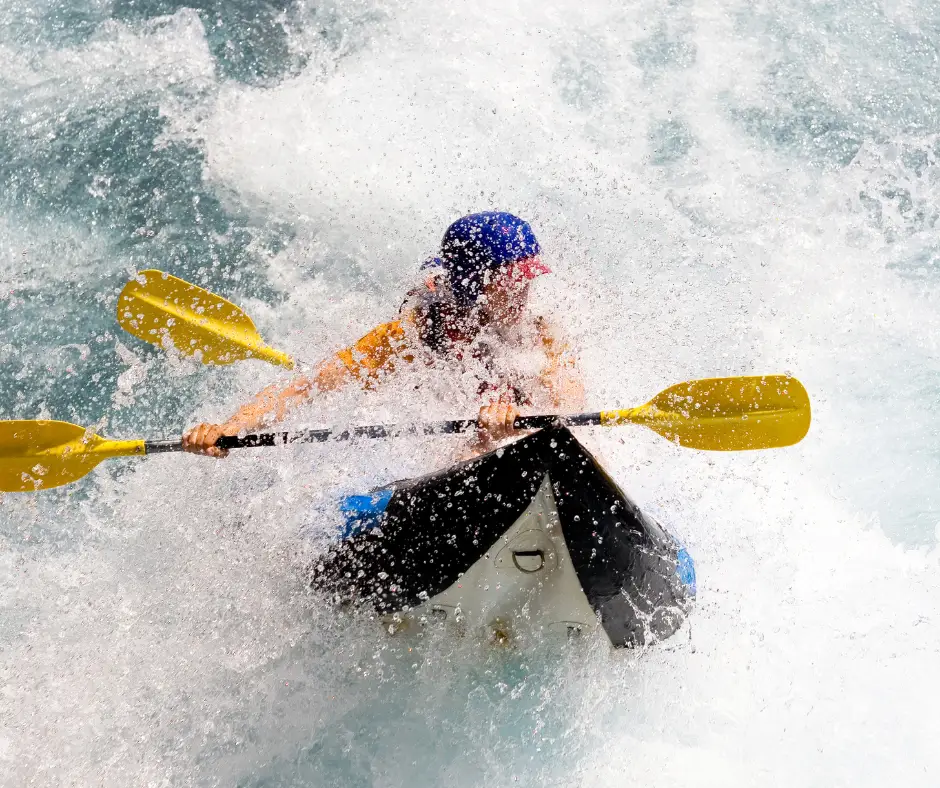If you’re just starting out in the world of paddling, you may be wondering which sport is more beginner-friendly: kayaking or canoeing?
Both sports have their own unique benefits and drawbacks, so it can be tough to decide which one to try first especially if you’re afraid of flipping over.
In this blog post, we will break down the basics of both sports, know which is easier to flip canoe or kayak and help you decide which one is right for you!
Table of Contents
Flipping When Paddling – How Easy Is It?
Kayaks are generally light and slender so they make for an excellent choice for beginners. Other than being easy to transport, they also require much less power to paddle, and it’s relatively easy to learn the basics.
However, because kayaks are so narrow, they tend to be less stable when compared to canoes and are, therefore, very likely to flip even in flat water.
The good thing about this is that it’s much easier to get a kayak on the right side up again when flipped precisely because it’s slender. With experience and a great deal of strength, a single kayaker can recover from a flipped kayak.
Canoes, on the other hand, are a great option for beginners because they’re generally more stable than kayaks, with much less tendency to flip. On flat water, the chances of flipping are very slim.

However, it is possible to flip a canoe especially if overloaded in whitewater. And when it does happen, it requires a great deal of strength from two people to get the canoe the right side up again.
In a lot of cases, you may even need another vessel to help in draining and flipping the canoe back to its original position. In some cases like violent and extremely cold waters, it may be best to abandon canoes than to try to re-flip them.
Rafts are also much less likely to flip than kayaks as they generally have a wider base.
However, since they’re made from inflatable materials, a strong gust of wind especially on whitewater can easily flip them over especially if it isn’t carrying much weight.
Unfortunately, its wide stable base can be a downside when it does flip because it makes it more difficult to recover.
While it is possible for one person to flip it since it’s so light, the problem is that you’ll need a fair amount of training before you can do it consistently.Two people, however, would make the workload much easier.
One of the paddling world’s fastest-growing segments in the sport is the inflatable kayak.
The inflatable kayak is generally more durable, easier to transport, and most importantly, it’s also much easier to recover from a flipped inflatable kayak because it is much lighter than traditional hardshell kayaks.
In fact, one person can easily flip a kayak whether on whitewater or flat water.
Explorer K2 Kayak, 2-Person Inflatable Kayak Set
Which Is Easier To Flip: Canoe Or Kayak?
When it comes to flipping a canoe or kayak, it’s no question that kayaks are much easier to flip. Both traditional hardshells and inflatables are designed with recoverability in mind, and their weight makes them easy to handle in the water.
Canoes, on the other hand, are much heavier and more difficult to maneuver. As a result, flipping a canoe can be a challenging task, particularly for beginners.
Any experienced paddler will tell you that flipping a boat in whitewater is much more difficult than in flat water. There are several reasons for this.

First of all, the rapids create turbulence that can make it difficult to keep the boat upright. Also, the waves are often taller in whitewater, making it harder to quickly right the boat if it does flip over.
Finally, paddlers in whitewater usually have less time to react when they capsize because the rapids move much more quickly than flat water.
For all these reasons, it’s important to be extra careful when paddling any type of boat on whitewater and to be aware of the increased risk of flipping.
So, if you’re a beginner paddler, it’s best to use an inflatable kayak. It may be less stable than a canoe, but in case you tip over, it’s much easier to right the boat and performs a reentry.
How to Flip A Canoe or Kayak
Flipping a capsized kayak is an essential skill for any paddler. So we’ve enumerated some of the most common steps that will help you flip a wide variety of watercraft such as kayaks and canoes.
Common Steps to Flip A Canoe or Kayak
- Step 1: Assess the situation and make sure that it’s safe to flip the vessel
- Step 2: From either the port or starboard side, reach across the tipped-over boat and grab hold of the opposite side.
- Step 3: Lean back and let gravity rotate the boat.
- Step 4: Once the vessel is right side up, re-enter.
Protips to Flip A Canoe or Kayak Easier
- Tie a short rope on either side of the boat so you can easily find and grab onto it in case it flips.
- With some practice, you can flip a kayak without ever getting off it.
- Some kayaks and canoes have bungee cords on the sides that you can use to keep your paddle in control as you flip the boat or during re-entry.
- Practice flipping your watercraft in flatwater. This way, you’ll be ready if and when you’re faced with accidental flipping over.
- Don’t forget to drain as much water as you can before re-entry.
FAQs
Do kayaks flip over easily?
Yes. Some kayaks are even designed to flip over easily as they’re intended to be able to handle frequent flipping.
Do canoes flip easily?
Typically, canoes are much harder than kayaks to flip as they have a slightly wider base.
Is kayak or canoe easier for beginners?
While both kayaks and canoes are safe excellent forms of transportation on the water, the best option for beginners is kayaking as they’re easier to bring to the water and are more versatile.
Final Thoughts:
When it comes to choosing a kayak or canoe, there is no easy answer. Both have their own unique benefits and drawbacks.
For instance, kayaks are generally shorter and narrower than canoes, making them more maneuverable. They also tend to be lighter and easier to transport.
However, they can be more difficult to get in and out of, and they offer less storage space. Canoes, on the other hand, are wider and more stable, making them ideal for carrying heavy loads.
They also tend to track better in a straight line than kayaks. However, they can be harder to turn, and they can be more difficult to transport due to their size and weight.
Ultimately, the best decision for a beginner is to try both types of boats and see which one suits their needs best. But, if you need to choose just one, the versatility and ease of transporting a kayak make it the better choice by a slim margin.


3 thoughts on “Which Is Easier to Flip Canoe or Kayak?”